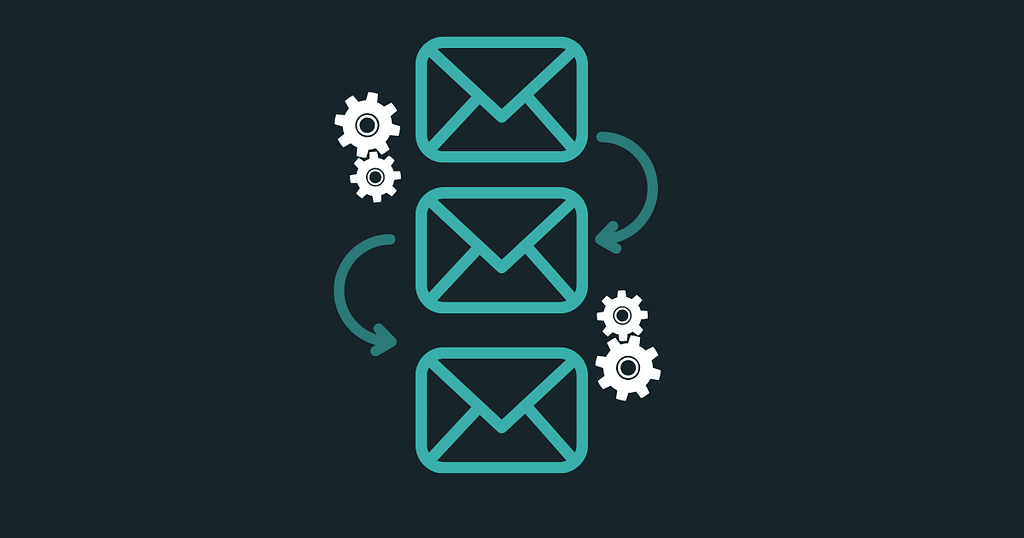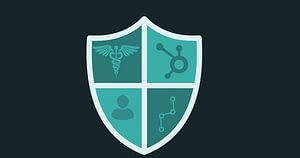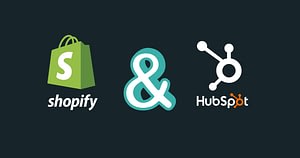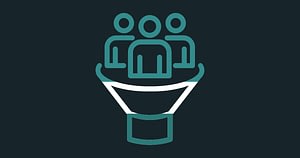Mastering B2B Email Marketing: Drip Campaign Workflows and Email Sequences

In today’s fast-paced digital world, B2B marketing has transformed, becoming more dynamic and interactive. Amidst this evolution, email marketing is a cornerstone strategy, particularly for startup owners navigating the bustling B2B landscape. The key to unlocking the full potential of your email marketing lies in two powerful tools: drip campaign workflows and email sequences. But why are these tools essential for B2B startups, and how can they turn your email marketing and email sequence efforts from a routine task into a strategic asset?
The Importance of Email Marketing in B2B Startups
For B2B startup owners, time is a luxury, and resources are often stretched thin. Email marketing presents a unique opportunity to reach and engage a professional audience efficiently. It offers a direct line of communication to potential clients and partners, crucial for building relationships in the B2B sector. However, the challenge lies in not just sending emails but sending the correct number of emails at the right time to the right people with the right copy.
Understanding Email Marketing in a B2B Context
In B2B marketing, email is a uniquely personal yet scalable channel, offering a blend of direct communication and broad reach. For startups especially, understanding the nuances of B2B email marketing can be the difference between a thriving customer relationship and a missed opportunity.
The Unique Challenges of B2B Email Marketing Compared to B2C
B2B email marketing presents a set of challenges distinct from the B2C space. The audience here comprises professionals who value their time and seek relevance and efficiency in communication. They make decisions regarding engagement emails based on logic and ROI rather than impulse. Thus, the content of B2B re-engagement emails here must be informative, concise, and tailored to address specific business needs and pain points.
Opportunities in B2B Email Marketing
Despite these challenges, email marketing in the B2B sector opens up numerous opportunities. It’s an excellent tool for building thought leadership, nurturing leads, and guiding them through a longer sales cycle typical in B2B transactions. It’s also a valuable channel for customer education, product updates, and building long-term relationships to retain customers.
Key Components of Successful B2B Email Campaigns
To harness these opportunities, specific vital components are essential in B2B email campaigns:
Personalization: Beyond using the recipient’s name, it involves tailoring the email content to their industry, role, and stage in the buyer’s journey.
Value Proposition: Each email should clearly articulate how your product or service solves a problem or improves the recipient’s business.
Call to Action (CTA): A clear and compelling CTA guides the recipient to the next step, whether downloading a whitepaper, signing up for a webinar, or scheduling a demo.
Consistency and Timing: Regular but not overwhelming email communication helps keep your brand top of mind without spamming the inbox.
Analytics and Feedback: Monitor open rates, click-through rates, and conversion rates to refine and improve your email strategy continually.
Drip Campaigns and Email Sequences: Pivotal Tools for Strategic Communication
Drip campaigns and email sequences emerge as pivotal tools in the arsenal of modern email marketing strategies. A drip campaign is often managed through sophisticated automated email sequence and software, is a methodically planned series of emails dispatched based on a consistent sending schedule or in response to specific user actions (forms, website page visits, email clicks, etc.). These campaigns are instrumental in maintaining a seamless flow of communication with new subscribers, methodically nurturing them with pertinent content tailored to each phase of their engagement journey.
Conversely, an automated email sequence is designed with a focused objective, such as facilitating the first onboarding or lead nurturing email sequence for new users, reactivating engagement with inactive subscribers through a targeted re-engagement email sequence, or propelling a particular action, like purchasing an item or booking a demo. Each email in this sequence is meticulously crafted to guide the recipient to the desired outcome, whether educating them about a product or service, directing them to a particular page, or promoting attendance at an upcoming event through an event email sequence.

It is crucial to incorporate elements like lifecycle emails that align with the subscriber’s stage in their journey with your brand. These automated email sequences should also strive to write evergreen content that remains relevant and engaging over time, ensuring longevity and effectiveness of your email sequence template and marketing efforts.
The Synergy of Drip Campaigns and Email Sequences: A Dual Approach in Marketing and Sales

The integration of drip campaigns and automated email sequences represents a strategic convergence of marketing and sales efforts, creating a seamless communication flow that enhances the effectiveness of email marketing initiatives. This synergy allows for a comprehensive approach to nurturing leads and driving conversions, aligning marketing outreach with sales objectives.
Marketing Initiates with Drip Campaigns
Building a Foundation with Drip Campaigns:
Consistent Engagement: Marketing teams initiate the conversation with drip campaigns, ensuring regular touchpoints with the audience. These automated emails keep your brand top of mind, providing relevant information and value at each customer journey stage.
Educational Content: Early-stage drip campaigns educate potential customers about the brand, products, or industry insights, thus setting the stage for a deeper relationship.
Lead Qualification: Through consistent engagement and educational content, drip campaigns help qualify leads by gauging their interest and interaction levels, preparing them for more targeted sales approaches.
Transitioning to Sales with Email Sequences
Deepening Engagement with Email Sequences:
Targeted Follow-Up: As leads show increased engagement or move down the funnel, the sales team takes over with email sequences. These sequences are more direct and focused, aiming to convert interest into action.
Personalized Communication: Email sequences crafted by sales are highly personalized, addressing specific pain points, offering tailored solutions, or providing special offers that resonate with the individual lead’s needs.
Closing the Deal: The ultimate goal of sales-driven email sequences is to guide the lead toward purchasing decisions, leveraging the groundwork laid by the marketing team’s drip campaigns.
The Value of a Unified Approach
Combining drip campaigns and email sequences ensures a holistic email marketing and sales approach. This unified strategy offers multiple benefits:
Seamless Customer Experience: Leads receive a consistent and evolving narrative from initial awareness to decision-making, enhancing their overall experience with the brand.
Efficient Resource Utilization: This approach minimizes manual intervention, as the transition from marketing to sales is automated based on lead behavior and engagement.
Increased Conversion Rates: By providing relevant content at every stage and personalizing communication as leads become more qualified, this strategy leads to higher conversion rates.
Data-Driven Insights: Integrating these methods provides valuable data insights, allowing for continual optimization of marketing and sales efforts based on lead responses and interactions.
The synergy of drip campaigns and email sequences creates a dynamic and effective strategy for B2B startups. Starting with the wide-reaching and educational approach of marketing drip campaigns and transitioning into more targeted and personalized sales email sequences, businesses can cater to the evolving needs of their audience efficiently and effectively. This dual approach ensures continuous engagement and drives higher conversions by aligning marketing and sales efforts toward common goals. Realizing the Full Potential of Email Marketing
The Essentials of Email Drip Campaigns

Drip campaigns are automated emails triggered based on specific actions or timelines. In the B2B context, they are invaluable for maintaining a consistent communication flow and nurturing new leads effectively.
Benefits of Email Drip Campaigns in B2B Marketing
Automated Lead Nurturing: Automatically sends relevant information to leads over time, helping them move through the sales funnel without manual intervention.
Targeted Content Delivery: Delivers specific content that addresses the unique needs and interests of each segment of your audience.
Efficient and Time-Saving: Drip campaigns run automatically once set up, saving valuable time and resources.
Types of Drip Campaigns for B2B Startups
Welcome Email Series: Introduces new subscribers to your brand and services.
Onboarding Campaigns: Helps new customers get the most out of your product or service.
Educational Content Series: Establishes your expertise and provides valuable insights.
Re-engagement Campaigns: Rekindles interest among subscribers who have become inactive.
Tools for Crafting and Managing Email Drip Workflows: HubSpot Marketing Hub
HubSpot Marketing Hub stands at the forefront of email marketing solutions and is particularly renowned for its capabilities in crafting and managing email drip workflows. This platform is ingeniously designed to cater to the diverse needs of modern marketers, from automating routine tasks to delivering personalized customer experiences.
Key Features of HubSpot Marketing Hub for Email Drip Workflows
Advanced Drip Campaign Builder:
Drag-and-Drop Interface: HubSpot Marketing Hub offers a user-friendly drag-and-drop interface that simplifies the creation of complex drip campaigns. This feature allows marketers to design and structure their entire email workflow with ease visually.
Conditional Logic: The platform supports conditional logic in drip campaigns, enabling marketers to create highly personalized paths based on subscriber actions or behaviors, such as email opens, clicks, or form submissions.
Seamless Integration with CRM:
Centralized Data: Integrating HubSpot’s powerful CRM with the Marketing Hub ensures that all customer data is centralized, offering a unified view of the customer journey and facilitating targeted and relevant email communication.
Dynamic Content: Utilizing CRM data, marketers can include dynamic content in their drip emails, ensuring each message is tailored to the recipient’s specific interests, preferences, or stage in the buyer’s journey.
Personalization and Segmentation:
Contact Personalization Tokens: HubSpot Marketing Hub allows personalization tokens to customize emails with contact-specific details, enhancing the relevance and engagement of each communication.
List Segmentation: Marketers can segment their email lists based on various criteria, ensuring that drip campaigns are targeted effectively to different audience segments.
Comprehensive Analytics and Optimization:
Performance Insights: The platform offers detailed analytics on drip campaign performance, including metrics such as open rates, click-through rates, and conversions, enabling marketers to measure the impact of their campaigns.
A/B Testing: Marketers can leverage A/B testing to experiment with different aspects of their drip campaigns, from email subject lines to content and design, optimizing based on empirical data.
Automated Workflow Triggers:
Behavior-Based Triggers: Email drip campaigns in HubSpot Marketing Hub can be triggered based on user behaviors, enabling marketers to automate follow-up emails that are timely and contextually relevant.
Lifecycle Stage Triggers: The platform allows for triggering emails based on the contact’s lifecycle stage, ensuring communication aligns with the customer’s position in the sales funnel.
Content Creation and Management:
Email Templates: HubSpot provides a variety of pre-designed and customizable email templates that cater to different objectives and styles, simplifying the content creation process.
Content Calendar: Marketers can use HubSpot’s content calendar to plan and schedule their drip campaigns, ensuring a consistent and organized approach to email marketing.
Anatomy of an Effective Email Sequence

While drip campaigns focus on automated, scheduled emails to new subscribers, the types of email sequences used in B2B marketing are all about a series of strategically timed and content-specific emails designed to achieve a particular objective. These email marketing sequences are often triggered by the recipient’s specific actions, making them highly relevant and personalized.
Understanding Email Sequences in B2B
Email sequences can be a game-changer in the B2B sector, where sales cycles are longer and decisions are more considered. They provide a structured approach to engagement and create an email sequence to guide potential customers and leads through email sequence examples at different stages of the buyer’s journey, from initial awareness to final decision-making.
Different Types of Email Sequences for B2B Startups
Welcome Email Sequence: Essential for building a strong first impression; introduces your brand and sets the tone for future communication.
Lead Nurturing Email Sequence: Delivers targeted content to build credibility and trust, gently steering leads toward a sale.
Re-engagement Email Sequence: Aimed at re-capturing the attention of leads that have gone cold or inactive subscribers.
Post-Purchase Follow-Up Email Sequence: Enhances customer experience and opens doors for upselling, cross-selling, and referrals.
Crafting Your First Welcome Email Sequence
Creating an impactful welcome email, with welcome emails, email sequence, and welcome email name template, is crucial for B2B startups. It’s the first step in a long relationship-building process.
Initial Welcome Email: Thank the new subscriber for joining, introduce your brand, and set expectations for what they’ll receive.
Follow-Up Emails: Provide additional value through insights, tips, or resources related to your industry.
Engagement Email: To deepen the relationship and encourage interaction, feedback, or social media engagement.
Designing a Re-engagement Email Sequence
Re-engagement sequences are designed to awaken dormant leads or re-engage customers and re-engage with inactive subscribers, bringing them back to the online store, re-engagement email, and into the fold.
Attention-Grabbing Email: Start with a compelling subject line and content that reignites their interest in your brand.
Value Proposition Reminder: Remind them of your product or service’s unique benefits.
Special Offer or Incentive: Provide a discount code, exclusive content, or other incentives to encourage re-engagement.
Best Practices for Onboarding Email Sequences
The first onboarding and welcome email sequences are crucial in setting the stage for a long-term relationship with your customers and understanding your new customers. It’s about your customer’s understanding and making them feel welcome, informed, and supported.
Key Elements of an Effective Onboarding Email Sequence
Introduction to Your Product/Service: Start with a warm welcome and an overview of what they can expect from your product or service.
Guided Steps: Provide a step-by-step guide to starting, making the process easy for new users.
Resource Sharing: Include links to helpful resources, tutorials, or blog posts that can enhance their understanding and use of your product.
Customer Support Information: Ensure they know how to reach out for help, reinforcing your commitment to their success.
Personalizing the Onboarding Experience
Personalization is critical in onboarding and engagement email sequences. Tailor your onboarding re-engagement sequence, engagement template, and emails based on the customer’s industry, role, or specific use case to make the content more relevant and engaging.
Lead Nurturing Through Email Sequences
Nurturing leads through email sequences is an art. It’s about providing value at each step in the engagement sequence between in-person events, building trust, and gradually leading them through the email sequence and closer to a purchase decision.
Developing a Lead Nurturing Strategy
Understanding Your Lead’s Needs: Segment your leads based on their behavior, interests, and place in the sales funnel.
Content That Educates and Informs: Share content that addresses their specific challenges and goals.
Regular Check-ins and Updates: Keep the communication going with updates, news, or insights relevant to their industry.
Automating Your Email Marketing
Automation is the backbone of efficient and effective email marketing, especially for startups where resources are limited.
The Role of Automation in Email Marketing
Time-Saving: Automate repetitive tasks to focus on more strategic aspects of your business.
Consistent Engagement: Ensure regular contact with your leads and customers, maintaining your brand’s presence in their inbox.
Personalization at Scale: Use automation tools to personalize bulk emails based on user behavior or preferences.
Leveraging Tools like HubSpot for Email Automation
Platform automation software like HubSpot Marketing Hub offers powerful automation capabilities, making managing complex emails, email marketing sequences, and creative drip campaigns easier. Discuss how these tools can be integrated into your email strategy for maximum effectiveness.
Creating Compelling Subject Lines
The subject line is your email’s first impression, and in the busy inboxes of B2B professionals, it can be the make-or-break factor in your initial email out’s success.
Crafting Effective Subject Lines for Different Sequences
Clarity and Relevance: Ensure your subject lines reflect the content of your email. Being straightforward often yields better open rates.
Personalization and Specificity: Personalize subject lines with the recipient’s name or company, and be specific about the value inside the email.
Creating Urgency or Curiosity: Use language that creates a sense of urgency or piques curiosity, but avoid sounding spammy or over-promising.
Examples of Engaging Subject Lines
For Welcome Emails: “Welcome to [Brand Name], [Recipient’s Name]! Let’s Get Started”
For Re-engagement: “We’ve Missed You! Check Out What’s New at [Brand Name]”
For Onboarding: “Step-by-Step Guide to Mastering [Product/Service]”
Email Sequence Templates and Tools
Templates and tools can significantly streamline the creation of effective email sequences, especially for startups looking to develop templates to save time and resources.
Utilizing Templates for Efficient Email Creation
Standardized Frameworks: Use templates as a starting point to maintain consistency in your email marketing efforts.
Customization for Branding: Customize templates to reflect your brand’s tone and style, making your emails stand out.
Adaptability for Different Sequences: Choose templates that are adaptable for various email sequences – from lead nurturing to customer retention.
Tools for Crafting and Managing Email Sequences: HubSpot Sales Hub
HubSpot Sales Hub is a comprehensive solution for crafting, creating, and setting up email sequences designed to streamline the sales process. This powerful tool integrates seamlessly into a business’s sales strategy, offering robust features to automate and manage email sequences efficiently.
How HubSpot Sales Hub Works for Email Sequences
Intuitive Email Sequence Creation:
User-Friendly Interface: HubSpot Sales Hub features a straightforward and intuitive interface that simplifies creating email sequences. Users can quickly draft and organize emails to be sent out automatically.
Customization Options: The platform allows for extensive customization of email content, ensuring that each message can be tailored to address specific customer needs or stages in the sales funnel.
Automation of Email Sequences:
Trigger-Based Sending: HubSpot Sales Hub enables the setting up of trigger-based emails. These triggers can be based on customer actions, such as website visits, email opens, or form submissions, ensuring timely and relevant communication.
Scheduling Flexibility: Users can set specific time intervals between emails, allowing for a natural and strategic flow of communication with potential leads.
Personalization at Scale:
Contact Personalization Tokens: The platform allows personalization tokens, enabling users to insert contact-specific information such as names, company details, or any other contact attribute into the emails, making each interaction more personalized and engaging.
Segmentation Capabilities: Users can segment their email sequences based on various criteria, ensuring the right messages reach the right audience at the right time.
Measuring Success and Optimizing Campaigns
To ensure your email marketing efforts are practical, measuring their success and continually optimizing based on data is crucial.
Key Metrics to Track
Open Rates: Gauge the effectiveness of your subject lines and the optimal time for sending emails.
Click-Through Rates (CTR): Assess the engagement level of your email content and CTAs.
Conversion Rates: Measure how well your emails achieve their intended goals, sign-ups, downloads, or sales.
Integrating Email Marketing with Overall Business Strategy
Email marketing should not exist in a silo. It’s most effective when integrated with your overall business and marketing strategies.
Aligning Email Campaigns with Business Goals
Sales Alignment: Ensure your email sequences are designed to support and enhance your sales process.
Brand Messaging Consistency: Maintain consistent messaging across all channels to reinforce your brand identity.
Customer Journey Mapping: Tailor your email content to align with different customer journey stages.
Recapping the Importance of Email Marketing in B2B
In the dynamic world of B2B marketing, mastering email drip campaigns and automated email sequences is more than just a strategy; it’s a necessity, especially for startups looking to establish a foothold in their respective industries. By leveraging the power of well-crafted, personalized email sequences and automated drip campaigns, startups can engage with their target audience more effectively, nurture leads, and drive conversions, all while optimizing time and resources.
Throughout this guide, we’ve explored the various facets of email marketing explicitly tailored for B2B startups. From the intricacies of creating engaging email subject lines to the strategic deployment of email sequences and drip campaigns, the goal has been to provide helpful information and a comprehensive roadmap to elevate your email marketing strategy.
The Synergy of Drip Campaigns and Email Sequences
We’ve seen how drip campaigns provide a structured approach to maintain consistent communication, while email templates and sequences allow for more targeted campaigns and action-driven messaging. They create a powerful combination that can significantly enhance your marketing efforts, leading to better engagement, higher conversion rates, and stronger customer relationships.
Ready to Implement Email Marketing Into Your Growth Strategy?
Now that you have the knowledge and tools to master B2B email marketing, it’s time to implement these best practices and strategies. Start by evaluating your current email marketing approach, identifying areas for improvement, and begin implementing the email template best practices and tactics discussed. Remember, the key to success in the same email marketing sequence lies in personalization, consistency, and a deep understanding of your target audience.
Encouraging Further Engagement
Explore HubSpot Tools: Delve into platforms like HubSpot Marketing Hub and HubSpot Sales Hub to streamline your email marketing process.
Subscribe for More Insights: Stay updated with the latest tips and trends in B2B marketing by subscribing to our newsletter.
Attend Our Webinar: Join our upcoming webinar for a deep dive into advanced email marketing tactics and live Q&A sessions.
Questions and Answers about Email Marketing, Drip Campaigns, Email Sequences, and Workflows
What is email marketing, and how is it beneficial for businesses?
Email marketing is a digital marketing strategy that sends emails to prospects and customers. It’s an effective way to communicate with your audience, promote your products or services, build relationships, and drive sales. The benefits include cost-effectiveness, high ROI, reaching a large audience with personalized messages, and measurable results.
Can you explain what a drip campaign is and how it differs from standard email campaigns?
A drip campaign is a series of automated emails sent out on a schedule or triggered by specific user actions. Unlike standard email campaigns, which are one-off broadcasts sent to large groups of recipients, drip campaigns are more targeted and personalized, aiming to nurture leads over time by providing relevant information and offers at the right moments in their journey.
What are email sequences, and why are they essential in email marketing?
Email sequences are a series of automated emails sent in a specific order to achieve a particular goal, such as onboarding new customers, becoming new subscribers, re-engaging inactive customers to understand former subscribers or nurturing leads. They are essential because they allow for consistent, targeted communication, helping to guide recipients toward a desired action, such as making a purchase or signing up for a service.
How do email workflows enhance the effectiveness of email marketing strategies?
Email workflows are automated processes that send emails based on predefined triggers and conditions and automate email sequences. They enhance the effectiveness of email marketing by ensuring timely and relevant communication, reducing manual tasks, and allowing marketers to segment their audience and personalize content. This leads to increased engagement, improved customer experiences, and higher conversion rates.
What are some best practices for setting up an effective drip campaign?
Best practices for setting up an effective drip campaign include segmenting your audience to ensure message relevancy, personalizing emails to increase engagement, using a clear and compelling call-to-action, testing different elements (like subject lines and content) to optimize performance, and monitoring campaign analytics to make data-driven adjustments. Providing value in each email and keeping the content aligned with your overall marketing goals is crucial.






